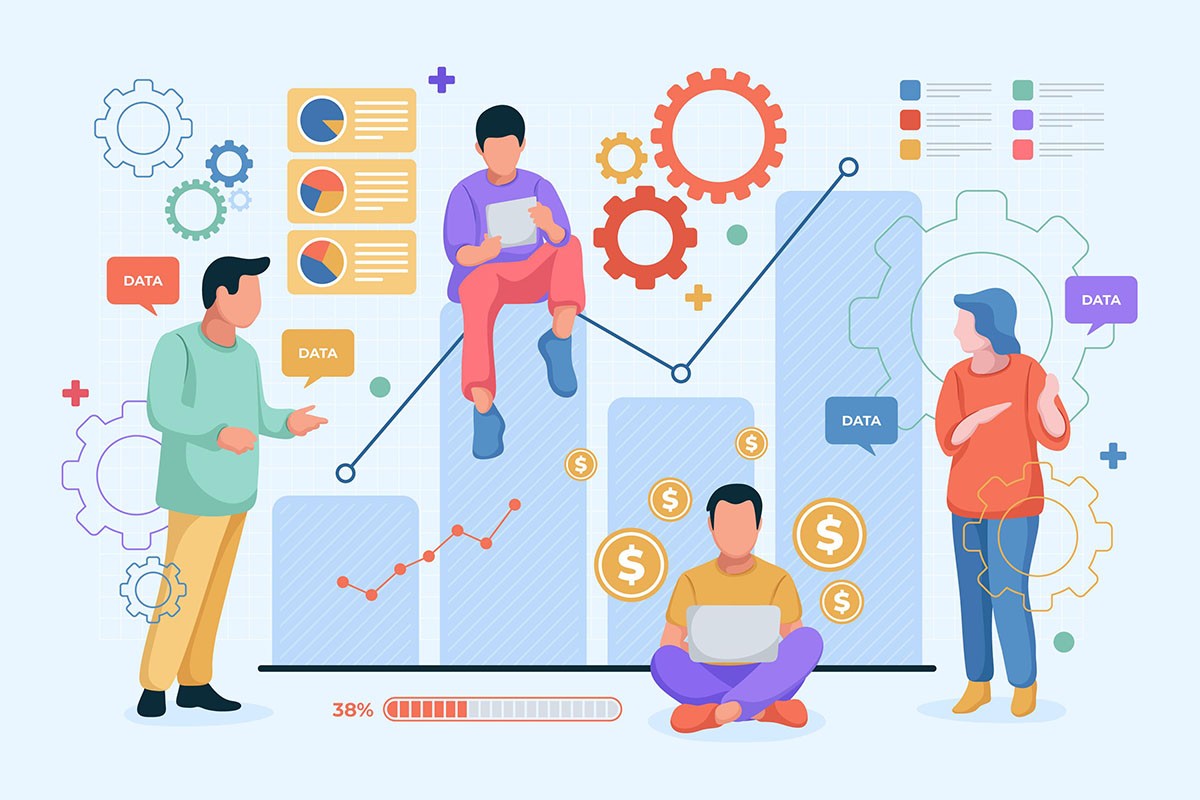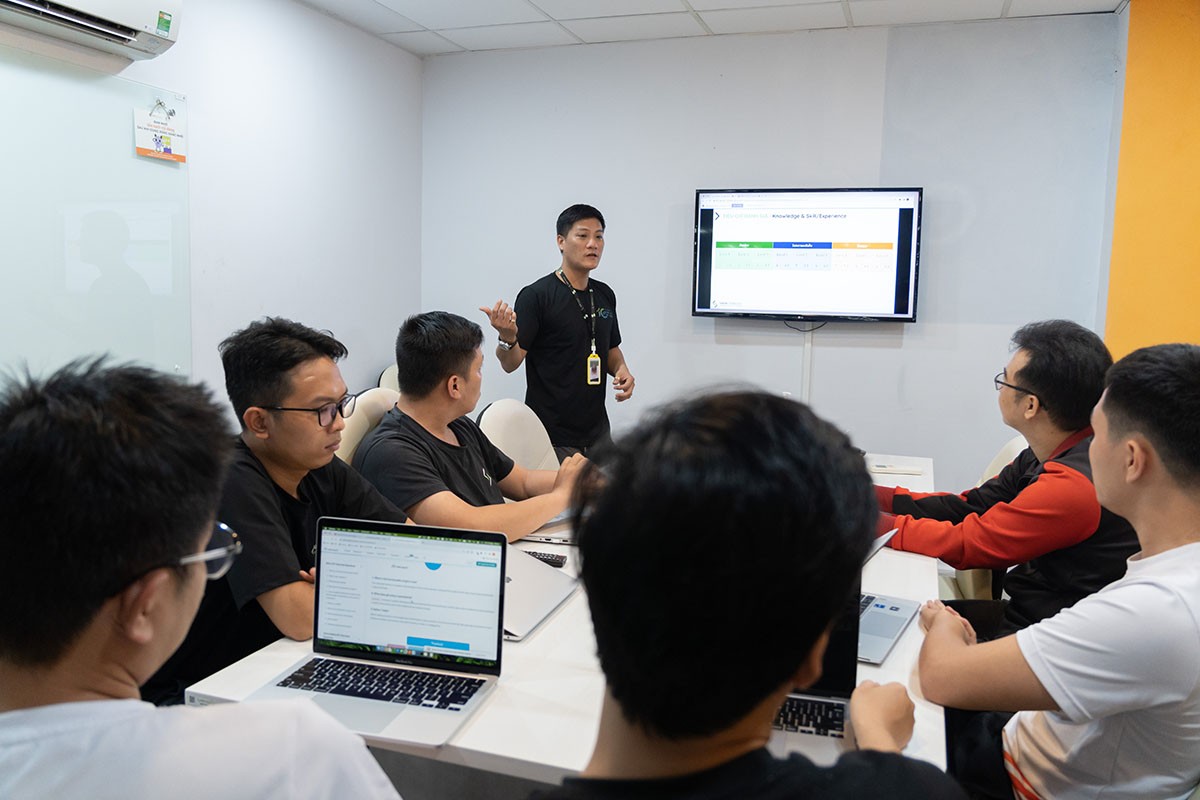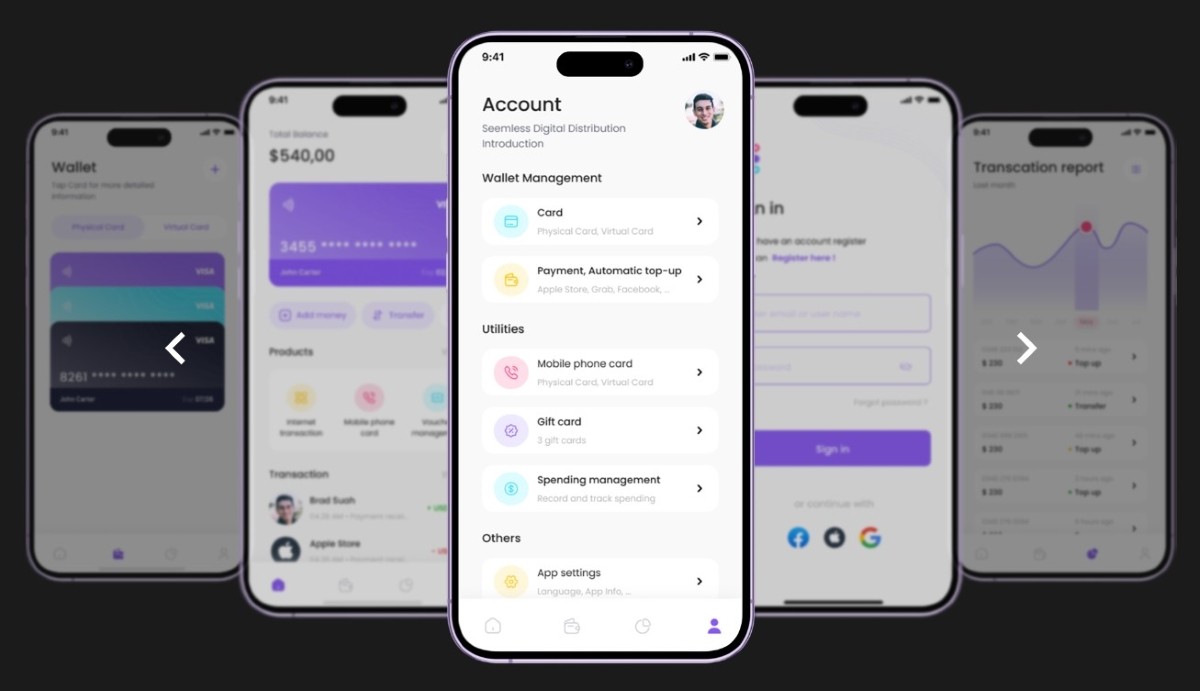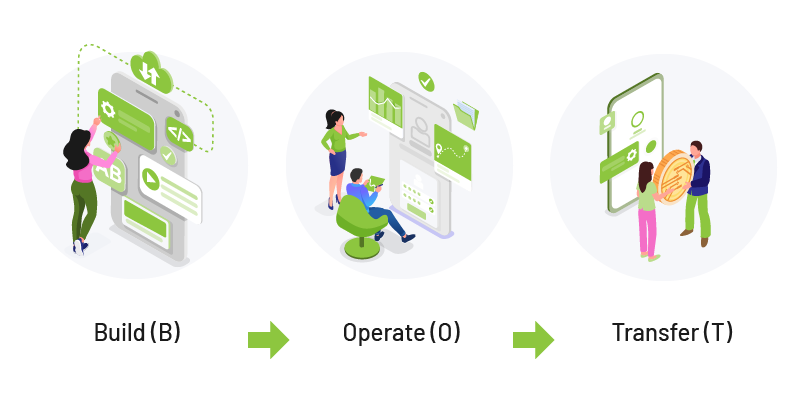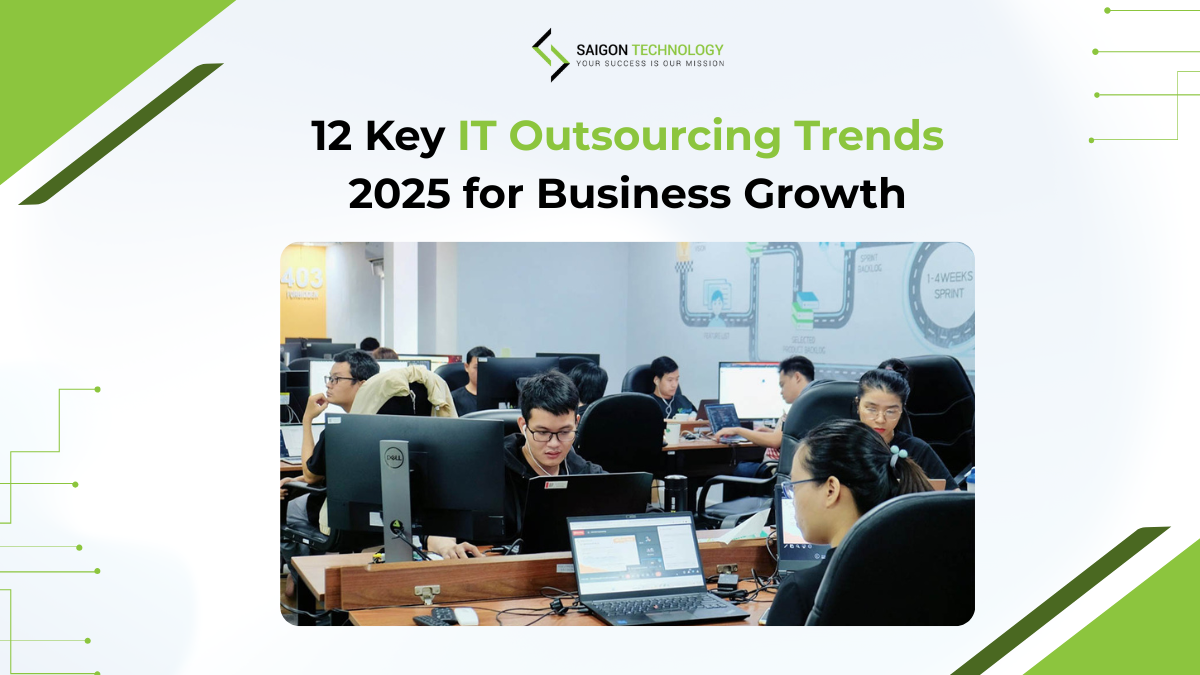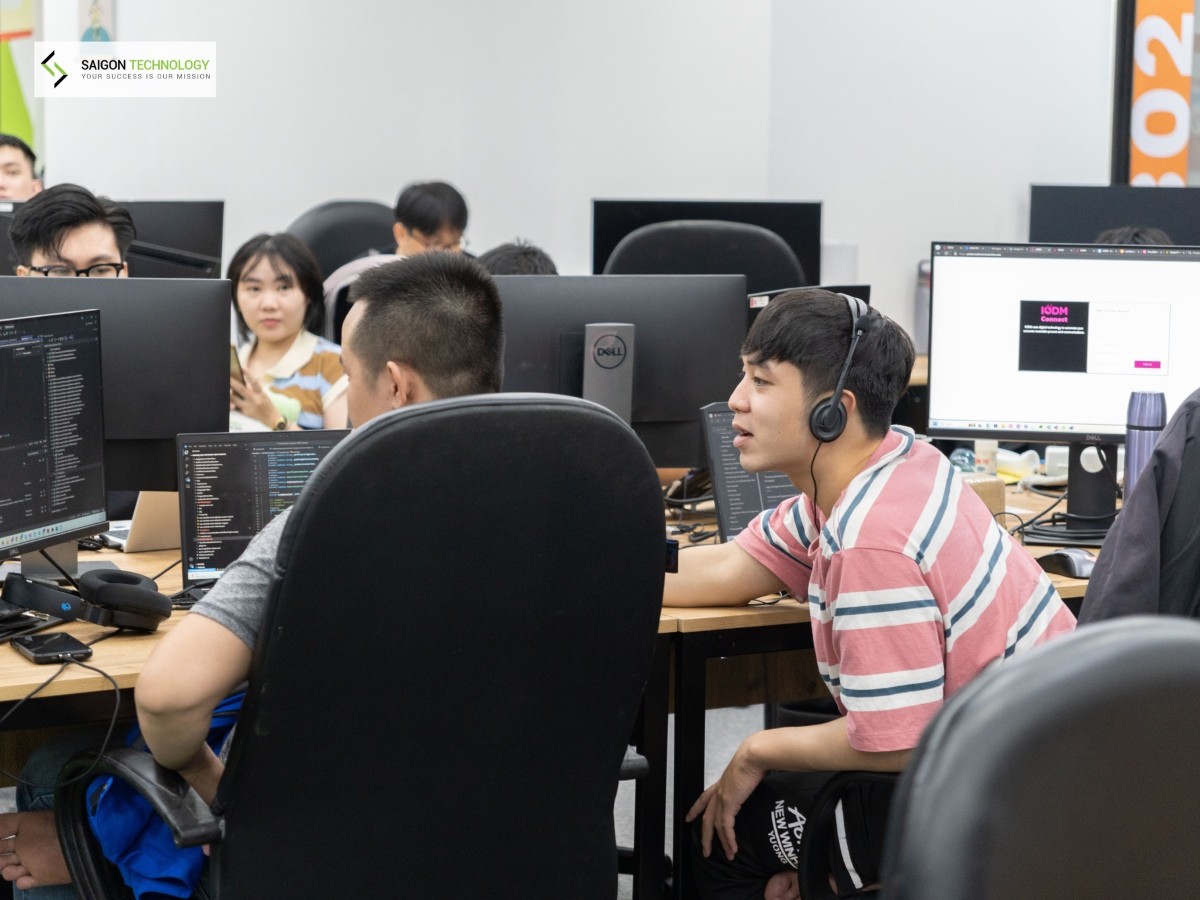Image source: Freepik
In the dynamic realm of software development, outsourcing models play a pivotal role in determining the success of projects. These models of outsourcing define the structure and collaboration between businesses and their outsourcing partners. Each model offers unique benefits tailored to specific use cases, from delineating responsibilities to optimizing costs.
Choosing the right outsourcing model is essential for aligning business objectives, maximizing returns, and ensuring seamless project execution. This guide delves into the nuances of these models, empowering businesses to make informed decisions.
Key Types of Software Development Outsourcing Models
Navigating the landscape of software development outsourcing models is essential for businesses seeking to capitalize on global expertise. These models can generally be categorized based on three principal criteria: location, relationship, and contractual obligations.
-
Geographical-Location Outsourcing
This model classifies outsourcing partnerships based on the physical location of the service provider relative to the hiring company. Such categorizations may include nearshoring, offshoring, and onshoring, each offering unique advantages concerning cultural alignment, time zone synchronization, and cost-effectiveness.
Learn more: Offshore software development services
-
Relationship-Oriented Outsourcing Models
This approach centers on the depth and nature of the relationship between the client and the service provider. Whether it’s a fully integrated dedicated team, a project-based partnership, or a hybrid of both, the essence is to foster synergy and achieve desired outcomes.
-
Contractual Models
Here, the focus is on the terms of engagement. Whether it’s a fixed-price contract, time and materials model, or a milestone-driven agreement, these outsourcing models determine both parties’ financial and deliverable commitments, ensuring clarity and mutual understanding.
Software Development Outsourcing Models: The Roadmap to Efficiency
In the ever-evolving technological landscape, software development outsourcing models stand as a beacon for businesses seeking efficiency, cost-effectiveness, and adaptability. Derived from diverse criteria, these models offer tailored solutions that align with a company’s unique project demands and operational dynamics.
‘The outsourcing model reduces expenses by eliminating the need to hire or train new employees and/or the support staff (HR, admin, etc.) and increase occupancy costs and investment in additional office space and equipment. Having a large pool of outsourced “on-demand” talent means companies can rapidly scale their workforce without the need to hire additional full-time employees and increase their overheads and their investment in office space and equipment. Using outsourcing creates new opportunities and makes better use of existing talent that helps employers get the most out of their current workforce.’
– Kikis Pissarides, Manager, Business Process Solutions, Deloitte
As companies recalibrate their strategies, software development outsourcing emerges as a robust strategy to navigate financial constraints and operational upheavals. Let’s dive deeper into the specifics of these models.
1. Staff Augmentation Model
Staff Augmentation is a tactical methodology employed by businesses to address specific skill shortages. By integrating external experts with specialized knowledge into their existing teams, companies can seamlessly bolster their workforce capabilities without permanent expansions.
What are the advantages of Staff Augmentation?
This model stands out for its capacity to provide instant access to niche expertise, thereby elevating a team’s overall performance. It not only facilitates the swift fulfillment of project-specific demands but also ensures financial prudence by avoiding the enduring obligations associated with permanent staff hires.
Drawbacks:
- Integration Challenges: External professionals may require time to adapt to a company’s culture and workflow.
- Short-term Solution: While great for temporary needs, it might not address long-term objectives.
- Potential Overheads: Managing augmented staff requires resources, which could add to operational costs.
When is Staff Augmentation best?
Staff Augmentation shines in scenarios where there’s an immediate demand for specialized skills for a defined period. It’s especially valuable for businesses that need to swiftly adapt to changing project requirements while remaining economically efficient and avoiding long-term employment liabilities.
2. Dedicated Development Team Model
The Dedicated Development Team model is a collaborative framework where an external, specialized team functions as an integrated unit of the client’s business, working exclusively on its projects and initiatives. This team becomes an extended arm of the business, operating in tandem with the client’s vision and objectives.
What are the benefits of a Dedicated Development Team?
One of the defining benefits of such teams is their deep alignment with the client’s organizational culture, ethos, and strategic goals. This ensures a synergized approach, fostering a unified workflow and consistently high-quality outcomes. Additionally, having a team entirely committed means quicker adaptability, better understanding, and a holistic approach to project challenges.
Drawbacks:
- Higher Upfront Costs: Establishing a dedicated team might have initial costs higher than other models.
- Potential Over-reliance: Over-relying on an external team can lead to diminished in-house capabilities over time.
- Commitment: You’re committed to the team, making it challenging if project requirements change drastically.
When is a Dedicated Development Team best?
This model is particularly well-suited for businesses embarking on complex, long-haul projects or those requiring consistent, specialized expertise. It’s an ideal choice when continuity, deep domain knowledge, and a harmonized approach are paramount to the project’s success.
3. Fixed Price Model
The Fixed Price Model is a straightforward outsourcing strategy where the scope and budget of a project are set in stone from the outset. It binds the service provider to deliver the specified outcomes at the agreed-upon cost, providing clear expectations for both parties involved.
What are the benefits of the Fixed Price Model?
This model ensures financial predictability for businesses, eliminating the chance of unforeseen costs. With its clear demarcations, companies can have peace of mind knowing they won’t exceed the budget. Additionally, established boundaries and goals, often lead to a focused and efficient approach to project execution, ensuring timely delivery.
Drawbacks:
- Rigidity: If the project needs change, adjusting the scope can be problematic.
- Potential for Lower Quality: To stay within budget, some providers might cut corners, affecting the quality.
- Limited Transparency: Businesses might not always be privy to detailed breakdowns of resource allocation, leading to potential trust issues.
When is the Fixed Price Model preferred?
The Fixed Price Model shines in scenarios where the project’s requirements, deliverables, and scopes are well-defined and unlikely to change. It’s an excellent choice for businesses that prioritize budgetary control and want to ensure a capped expenditure while achieving specific project outcomes.
Harnessing the full potential of software development outsourcing models can be transformative. As Pissarides emphasizes, businesses must leverage every opportunity to streamline operations and maintain financial stability in these turbulent times. Outsourcing is a pivotal strategy, offering agility and expertise in one comprehensive package. Whether it’s accessing cutting-edge technology or tapping into global talent, the strategic deployment of these models can usher in operational excellence and sustainable growth.
How to Choose the Right Model for Your Business?
Navigating the plethora of software development outsourcing models can be daunting. Yet, the key lies in aligning the model with your business’s specific needs, goals, and constraints. Here’s a structured approach to guide your decision-making process.
Comparison of the Software Development Outsourcing Models:
Scope
- Staff Augmentation: Defined by specific roles and skills required.
- Dedicated Development Team: Clearly defined, tailored to long-term and specialized projects.
- Fixed Price Model: Stringently defined, with no deviations unless renegotiated.
Timeline
- Staff Augmentation: As per the client’s project timeline.
- Dedicated Development Team: Often long-term, but dependent on project requirements.
- Fixed Price Model: Fixed, based on agreed deliverables.
Control
- Staff Augmentation: High; augmented staff integrates into the client’s existing team.
- Dedicated Development Team: Medium to high; outsourced team aligns with the client’s directives.
- Fixed Price Model: Medium; client sets the project parameters, outsourced team manages execution.
Flexibility
- Staff Augmentation: Medium; scope adjustments require additional negotiations.
- Dedicated Development Team: Moderate; dedicated nature allows for some flexibility, but within the broader project scope.
- Fixed Price Model: Low-scope changes may lead to additional costs.
Team Scalability
- Staff Augmentation: High; easy to add or remove resources.
- Dedicated Development Team: High; teams can be expanded or shrunk based on evolving needs.
- Fixed Price Model: Low; determined by project requirements.
Responsibility for Executions & Deliverables
- Staff Augmentation: Primarily the client’s, as augmented staff follow in-house guidelines.
- Dedicated Development Team: Shared, with outsourced team taking the primary lead.
- Fixed Price Model: Entirely the outsourcing team’s.
Client Involvement
- Staff Augmentation: Extensive; as augmented staff work as part of the in-house team.
- Dedicated Development Team: Regular interactions and check-ins to ensure alignment.
- Fixed Price Model: Occasional; mainly at key milestones or reviews.
Client Technical Expertise/ Leadership
- Staff Augmentation: High; augmented staff rely on in-house direction.
- Dedicated Development Team: Moderate; the outsourced team usually brings technical expertise, but client leadership provides direction.
- Fixed Price Model: Minimal; the onus is on the outsourced team.
Communication with Outsourced Team
- Staff Augmentation: Seamless; they function as part of the client’s team.
- Dedicated Development Team: Continuous and structured.
- Fixed Price Model: At set intervals or milestones.
Overlap with In-house Team
- Staff Augmentation: High; integrated working environment.
- Dedicated Development Team: Moderate; both teams collaborate as one unit.
- Fixed Price Model: Minimal; outsourced team operates independently.
Product Management
- Staff Augmentation: Managed by the client.
- Dedicated Development Team: Joint effort, with the outsourced team often leading execution.
- Fixed Price Model: Managed by the outsourcing team.
High-Level Management
- Staff Augmentation: Managed by the client.
- Dedicated Development Team: Shared, with significant inputs from the client.
- Fixed Price Model: Client oversight with the outsourced team handling the execution.
Task Management
- Staff Augmentation: Client’s in-house management tools and strategies apply.
- Dedicated Development Team: Primarily managed by the dedicated team.
- Fixed Price Model: Entirely the responsibility of the outsourced team.
Project Management
- Staff Augmentation: Predominantly the client’s responsibility.
- Dedicated Development Team: Jointly overseen, with the outsourced team managing day-to-day tasks.
- Fixed Price Model: Fully managed by the outsourcing team.
Operations Supervision
- Staff Augmentation: Entirely overseen by the client.
- Dedicated Development Team: Collaboration between the client and dedicated team.
- Fixed Price Model: Outsourced team manages operations with client reviewing outcomes.
Workflow Development
- Staff Augmentation: Follows the client’s existing workflow.
- Dedicated Development Team: Jointly developed to ensure smooth operations.
- Fixed Price Model: Set by the outsourced team in alignment with project deliverables.
The choice between these models largely hinges on the nature of your project, its size, scope, and your organization’s specific needs. While some businesses might benefit from the adaptability of Time and Material Contracts, others might find value in the predictability offered by the Fixed Price Model. Evaluate the characteristics of each to make an informed decision.
Factors to Consider When Choosing a Software Development Outsourcing Model
Before you select one of the above models, here are some factors to consider:
- Clarity in Project Goals: Before selecting an outsourcing model, it’s essential to have a crystal-clear understanding of your project’s objectives and desired outcomes. Is it a short-term requirement, or do you foresee a long-term collaboration? Understanding the project’s duration and clarity of requirements can help streamline your choices.
- Industry Analysis: Conducting comprehensive market research provides insights into current trends and best practices, guiding you toward an appropriate model.
- Depth, Complexity, and Expansion Potential: Different projects have varied needs. Assessing the intricacy, potential growth, and overall scope helps in choosing the right software outsourcing model.
- Financial Planning: Your available budget and anticipated expenses play a significant role in determining the most cost-effective model to engage with. While some models, like fixed-price contracts, offer budgetary certainty, others like time and material might have variable costs. Align your financial flexibility with the model that best fits your budgetary constraints.
- Synergy with Internal Team: Ensuring that the software development outsourcing model complements your in-house team’s skills and resources is crucial for a harmonious workflow. Take stock of the skills and expertise already present within your team. If there’s a significant skill gap, models like staff augmentation or dedicated development teams can be beneficial.
- Consider Cultural and Time-zone Alignments: Choosing an outsourcing model that aligns with their time zone and cultural ethos can be crucial for businesses that prioritize seamless communication and collaboration. This is especially important if regular interactions and feedback loops are anticipated.
- Priority Setting: Consider the importance level of the project within your business strategy. High-priority projects might demand more intensive models, ensuring dedicated resources and attention.
- Project Oversight: Your desired degree of control and management over the project’s progress can influence the choice between more hands-on or hands-off outsourcing models. Sometimes, an external perspective can be invaluable. Consider consulting with experts or agencies that specialize in software development outsourcing models.
By weighing these factors, businesses can make an informed decision, aligning with their specific needs and ensuring the successful execution of their software projects.
Selecting the right outsourcing model is a strategic decision that can significantly impact your project’s success and the overall growth trajectory of your business. By aligning your business requirements, financial capabilities, and future projections with the appropriate model, you can harness the full potential of software development outsourcing.
Case Studies at Saigon Technology: A Glimpse into Successful Software Development Outsourcing Models
1. CHILIPLAY: Building Loyalty through Mobile Integration
ChiliPlay is a testament to the power of a well-executed software development outsourcing model. Intended as a loyalty app for the clientele of Chili Telecommunication Company, it facilitates users with a plethora of privileges.
What The Client Envisioned:
The initial idea was to develop an engagement model based on a fixed price with subsequent ongoing support. The primary functions included earning loyalty points, exchanging points for coupons, scanning barcodes to validate deals, reading news updates, and an intriguing Football prediction feature. The challenging aspect was that the client only had a basic idea without a detailed specification.
Our Approach:
Our team at Saigon Technology utilized diverse technologies such as Swift 2, Native Android, .Net backend, and Microsoft Azure, to name a few. The Football prediction feature was particularly challenging as it was time-sensitive, needing completion before the World Cup’s onset.
Outcome:
Despite the challenges, our adept team was able to transform the client’s rudimentary idea into a comprehensive, functional, and user-friendly loyalty app, seamlessly integrated with the requisite features.
2. MOBILE TEAM MANAGER: Streamlining Field Operations with Cloud Technology
Mobile Team Manager redefines the dynamics of field operations, creating a bridge between supervisors, operators, and various logistical challenges associated with field operations.
What The Client Desired:
The core objective was to devise an online Field Management solution that would minimize manual efforts, offer remote solutions for field management services, and introduce an intelligent scheduling system. Furthermore, the aspiration was to offer the Mobile Team Manager system as a service to other similar businesses.
Our Approach:
After a detailed analysis of the client’s needs, we adopted a two-pronged approach. Initially, a project-based model was chosen for the first three phases. As the project progressed, given its complexity and evolving requirements, we transitioned to the Scrum/Agile method. This methodology ensured that while maintenance and improvements were ongoing, the project’s primary milestones were continually being achieved. A dedicated team of developers from Saigon Technology immersed themselves in the project, gradually understanding and contributing to the business logic.
Outcome:
Through systematic testing and an agile response mechanism, we ensured the system’s smooth operation, even under heavy data loads. The agile troubleshooting response further allowed the client to enhance its technical competence rapidly. The end product is a cloud-based application that efficiently handles scheduling and facilitates real-time communication, revolutionizing the way field operations are managed.
At Saigon Technology, these case studies reflect our commitment to excellence, innovation, and the transformative power of the right software development outsourcing models.
Are You Ready to Approach a Software Development Outsourcing Models?
Navigating the intricate landscape of the software industry requires strategic decisions, especially when determining which developmental approach aligns best with a project’s goals. Software development outsourcing models have emerged as a game-changing strategy for many businesses. These models offer a diverse range of options, each tailored to address specific project requirements, budgets, and scopes.
From fixed contracts that ensure a set price to dedicated development teams that provide focused expertise, the variety of models of outsourcing caters to both startups and established giants in the industry. They offer flexibility, cost efficiency, and access to global expertise that can be pivotal in determining the success of a software project.
As the digital landscape continues to evolve, it’s essential for businesses to stay adaptable and informed. Choosing the right model is a decision that can set the tone for a project’s trajectory. With the right model, businesses can achieve efficiency, innovation, and excellence, ensuring that their software projects not only meet but exceed expectations.
Content Manager

